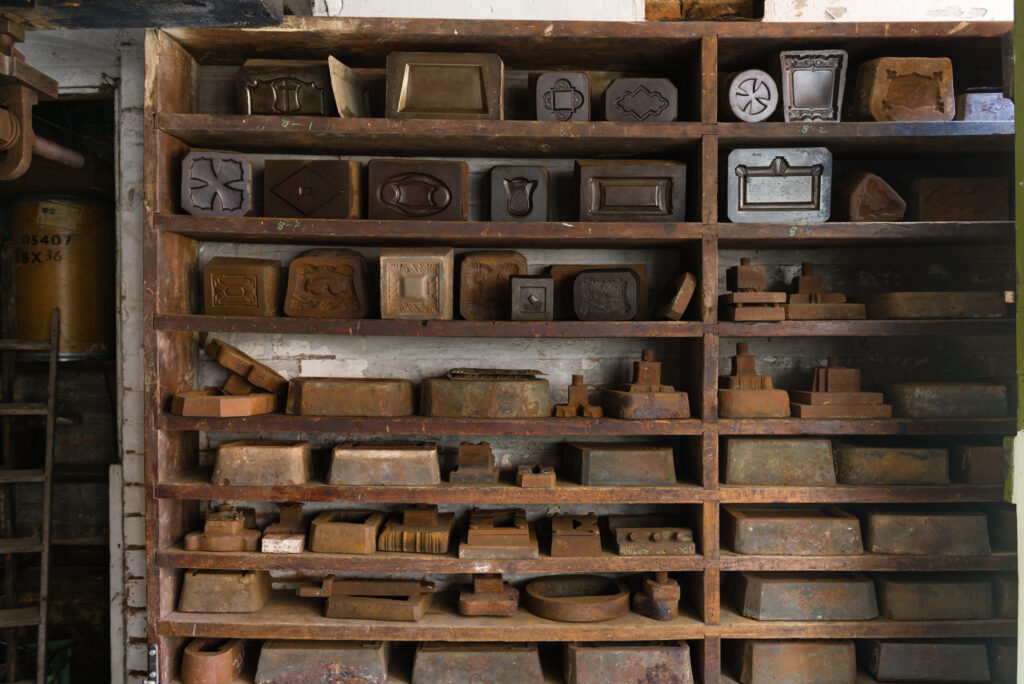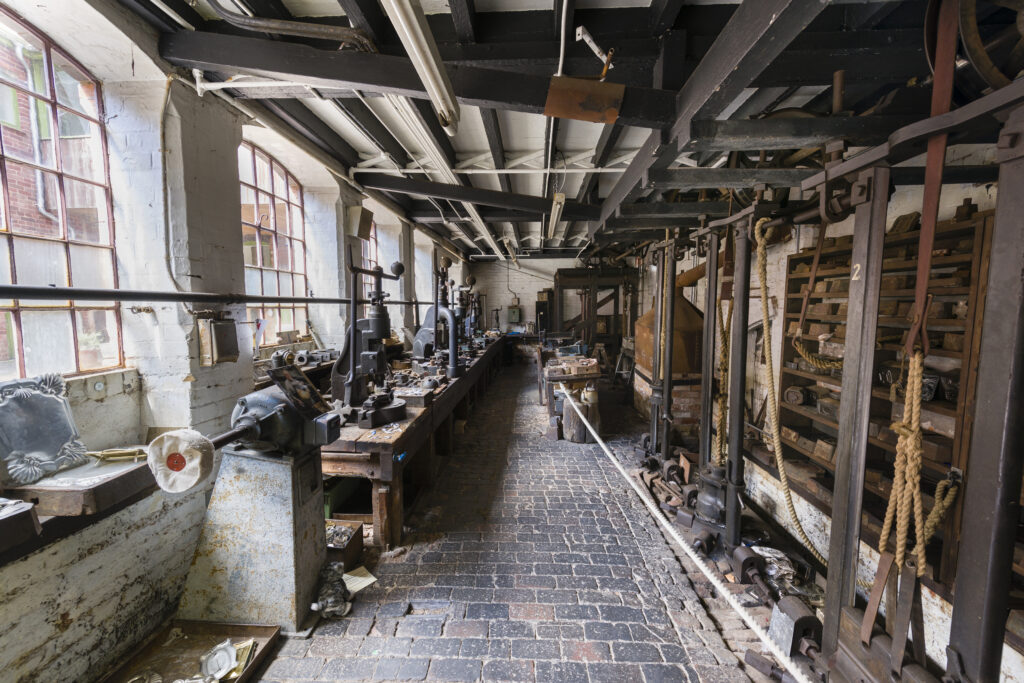

On the ground floor, next door to the former Plating Shop, we find the Stamp Shop. It still survives, containing working equipment, and is one of the highlights of a visit to the museum. Casting and stamping were the two basic processes used to make coffin furniture in the factory. Stamped products were cost a lot less to make than cast products and could be mass produced.
The process of stamping involves using a machine called a ‘drop stamp’ to drop a metal weight onto a sheet of metal to create a shape. At Newman Brothers, there is a ‘battery’ of four drop stamps, ranging from small to large, and one very large drop stamp which stands on its own. The smallest drop stamp is suitable for making ornaments the size of a coin, while the biggest drop stamp was used to produce the breastplates for a coffin lid, engraved with the name of the deceased.
Another key piece of equipment is the ‘die’. This is a block of steel with a sunken engraving in, this is the shape of the object to be stamped out. The craftsmen who made the dies were called ‘die sinkers’ a job which requires great skill. For many years the die sinker at Newman Brothers was Mr Ray who also carved out wooden patterns for the castings. Arthur Allen (Newman Brothers’ travelling salesman between 1903 and 1939) had a son named Anthony Allen who recalls Mr Ray in words and images as;
“…a delightful old character, Mr Ray, he had very small steel-rimmed spectacles and he made all the patterns. He had a block of tool steel, incredibly hard. He’d draw a design on it and it would probably take him two months to chisel it out, like a wood carving almost. And if you look at the Stamp Shop here, you’ll find some of them. They are beautiful bits of work and it was an incredible job. He not only made the big ones, he made all these little ones as well. He once made a pattern for me in wood to make a steam engine.”
However creating the die is only half of the job. To stamp the pattern into a sheet of metal, a corresponding ‘positive’ or raised shape is needed. This positive shape is called the ‘force’, and is made out of lead. It fits into the ‘negative’ shape carved into the die. To make the force, the die is fixed under the hammer and molten lead is poured into the carved pattern in the die. A temporary wall of clay is built around the edge of the die to stop the molten lead from spilling out. The hammer is then gently lowered onto the lead. After about ten minutes, the lead force sets and sticks to the bottom of the hammer. Everything is now ready to stamp out a coffin fitting.







